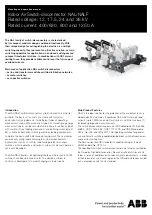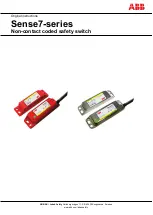
QoS Configuration
359
QoS Configuration
Traffic
Traffic refers to all packets passing through a Switch.
Traffic Classification
Traffic classification means identifying the packets with certain characteristics, using
the matching rule called classification rule, set by the configuration administrator
based on the actual requirements. The rule can be very simple. For example, the
traffic with different priorities can be identified according to the ToS field in IP packet
header. There are also some complex rules. For example, the information over the
integrated link layer (Layer-2), network layer (Layer-3) and transport layer (Layer-4),
such as MAC address, IP protocol, source IP address, destination IP address and the
port number of application etc can be used for traffic classification. Generally the
classification standards are encapsulated in the header of the packets. The packet
content is seldom used as the classification standard.
Packet Filter
Packet filter is used to filter traffic. For example, the operation “deny” discards the
traffic that is matched with a traffic classification rule, while allowing other traffic to
pass through. With the complex traffic classification rules, the Switch enables the
filtering of various information carried in Layer 2 traffic to discard the useless,
unreliable or doubtful traffic, thereby enhancing the network security.
The two key steps of realizing the frame filtering are as follows.
1
Classify the ingress traffic according to the classification rule;
2
Filter the classified traffic, that is the “deny” operation, the default ACL operation.
Traffic Policing
To deliver better service with the limited network resources, QoS monitors the traffic
of the specific user on the ingress, so that it can make a better use of the assigned
resource.
Port traffic limit
The port traffic limit is the port-based traffic limit used for limiting the general speed
of packet output on the port.
Traffic Priority
The Ethernet Switch can deliver priority tag service for some special packets. The tags
include TOS, DSCP and 802.1p which can be used and defined in different QoS
modules.
Queue Scheduling
When congestion occurs, several packets will compete for the resources. The queue
scheduling algorithms are used to overcome the problem. Here Strict-Priority Queue
(SP) queue scheduling algorithm is introduced.
Summary of Contents for 5500 SI - Switch - Stackable
Page 24: ...24 ABOUT THIS GUIDE...
Page 50: ...50 CHAPTER 1 GETTING STARTED...
Page 54: ...54 CHAPTER 2 ADDRESS MANAGEMENT CONFIGURATION...
Page 78: ...78 CHAPTER 3 PORT OPERATION...
Page 88: ...88 CHAPTER 4 XRN CONFIGURATION...
Page 122: ...122 CHAPTER 8 VLAN VPN CONFIGURATION...
Page 216: ...216 CHAPTER 15 SSH TERMINAL SERVICES...
Page 268: ...268 CHAPTER 16 IP ROUTING PROTOCOL OPERATION...
Page 308: ...308 CHAPTER 17 NETWORK PROTOCOL OPERATION...
Page 349: ...349...
Page 350: ...350 CHAPTER 18 MULTICAST PROTOCOL...
Page 522: ...522 CHAPTER 22 FILE SYSTEM MANAGEMENT...
Page 584: ...584 CHAPTER 30 PASSWORD CONTROL CONFIGURATION OPERATIONS...
Page 600: ...600 CHAPTER 31 MSDP CONFIGURATION...
Page 614: ...614 CHAPTER 32 CLUSTERING...
Page 670: ...670 CHAPTER C AUTHENTICATING THE SWITCH 5500 WITH CISCO SECURE ACS...















































